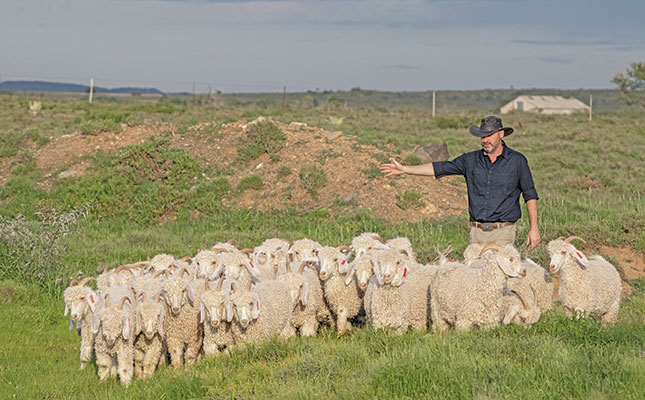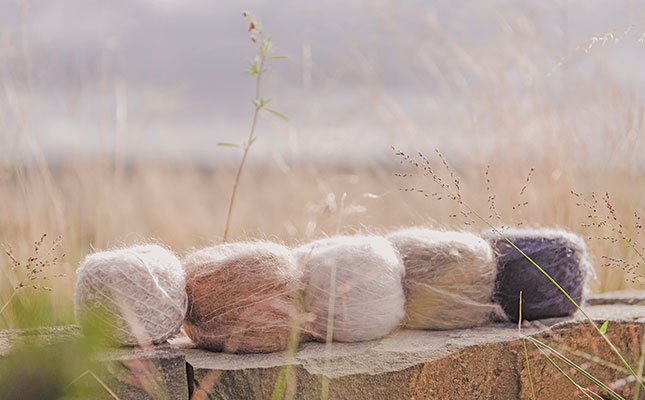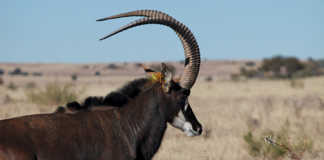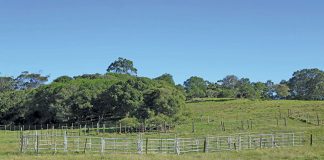
Photo: Supplied
The town of Jansenville in the Eastern Cape is situated on the banks of the Sundays River on the southern border of the Camdeboo Plain. The area, known as the Noorsveld, is named after the succulent shrub Euphorbia coerulescens, known in Afrikaans as noor or noorsdoring.
Angoras are ideally suited to the Karoo and the Noorsveld in particular, and Jansenville is widely known as the prime production area for Angoras in South Africa. These goats form the main branch of farming in the district, and the economy of the town and region is largely dependent on mohair.
Martyrsford farm, between Pearston and Jansenville, was founded by William Carey Hobson a century-and-a-half ago, and its current sixth-generation owner, Sean Hobson, is steeped in the local history of the breed.
According to him, the first Angora goats to arrive in South Africa were sent as a gift by the Sultan of Turkey, Mahmud II, in 1838.
“But because he wanted to protect his own country’s mohair industry, he sent one ewe and 12 infertile rams. What the sultan fortunately didn’t know was that the ewe was pregnant. She bore a ram, and this ewe and her lamb formed the genesis of Angora farming in South Africa. That was the start of the industry that today produces the biggest volume of and highest- quality mohair in the world,” says Sean.
Consistency and continuity
Martyrsford’s main breeding objective, he explains, has remained unchanged since its inception. It is to provide the industry with well-built, balanced Angora goats that have fleeces with good length, solidity and yolk.
Sean and his wife Julie are genuinely grateful for the sacrifices, toil and determination of previous generations on the farm.
“As they were, we remain committed to upholding the values and practices that have made the Martyrsford stud one of the leading Angora studs in the world, and we honour our forebears for their fortitude and grit over the past 150 years,” says Sean.
The stud is founded on proven genetics that have been developed conscientiously for long-term sustainability and profitability. The stud has always been kept true to type by careful selection and the introduction of meticulously selected new genetics. Some of the legendary rams bred by the Hobsons included Prince Charles, which was crowned National Champion Ram in 1959 and 1960, and Spogter, the Reserve National Champion Ram for the same period.
Weighty fleece, top microns
“The standard of Angora goats in South Africa since the days of the first pioneers has improved continually. Today’s goats have evolved from heavy-necked animals with straight hair into well-built animals carrying good, weighty mohair.

“Longevity of fleece, coupled with fertility, is one of the most important selection criteria. We want animals that provide fleece over the long term,” says Sean.
Apart from their superior fleeces and balanced bodies, Martyrsford rams are known for their ability to adapt to tough veld conditions. The stud ewes are well built and fertile, with good feminine features, while the kids are strong and healthy.
The flock is inoculated against parasites and diseases according to Martyrsford’s management programme. The goats are dosed for parasites and dipped for the prevention of ticks and lice, but most importantly to ensure that their fleeces stay clean.
“We’ve always tried to avoid extremes when it comes to breeding. We believe that a middle-of-the-road approach allows us to channel our genetics into an animal that has appeal to a wide spectrum of the Angora industry.
“We breed well-balanced rams with a good constitutions, strong heads and horns, well-formed hocks, and that are free of colour. Our fleeces have good length, yolk and solidity, with a general micron range between 32 and 36. Our ewes are well-grown-out, veld-adapted animals that are uniform and highly fertile,” says Sean.
Angora goats need to be shorn every six months. Not doing so exposes the animals to the fatal risks of getting stuck in vegetation, not being able to see predators, and the kids not being able to suckle their mothers. Shearing of Angora goats is a healthy management practice that all mohair farmers have to adhere to.
Asked how the Martyrsford animals coped with the recent overwhelming drought, Sean says that as a farmer, he has had no option but to carry on.
The drought resulted in a drop in goats numbers, but the value of investing in top genetics came to the fore during this challenging time, not only for Martyrsford but for the entire local Angora industry.
“It’s truly paying off now. Mohair is hitting a mini boom.
“Ram sales are achieving their best prices in 20 years and sale attendances have increased markedly. Mohair production is expanding significantly.”
Ethical standards
The Hobsons also ascribe the success of the local mohair industry to how it has implemented the Responsible Mohair Standard (RMS), an international standard aimed at improving the welfare of the animals.
According to Julie, the local RMS has set a standard that supports the global mohair value chain to ensure responsible sourcing, which drives sustainable and ethical production practices.
“This enables buyers to, among other things, trace mohair back to its source of production. The success of the RMS is underpinned by the fact that South African producers who adhere to the standard earn a 15% premium on world markets. Top fashion brands feel safe when they buy South African mohair,” she says.
The Hobsons expect the market for mohair to grow exponentially as the demand for ethically produced and sourced fashion increases.
“In terms of the RMS, we’re the world leaders by far. Leading fashion houses such as Armani and H&M prefer locally produced mohair because of the innovative, accountable and responsible way in which the industry implemented the RMS. The management does take time, but the return on investment is huge,” says Sean.
According to Julie, the fashion industry is petrified of criticism from environmentalists. The latest trend in attacks on the industry is ‘greenwashing’, where fashion brands that are perceived to act unethically and harm the environment are named and shamed.
“No other country can come near us at the moment in terms of production, numbers, turnover and demand for sustainably produced fleece,” she says.
Email Sean Hobson at [email protected].











